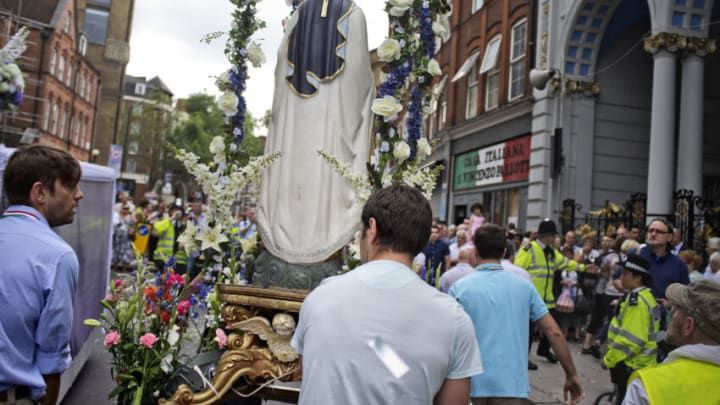The final of Euro 2020 sees England take on Italy at Wembley stadium with the hosts looking to win their first major honour since 1966, while Italy hopes to add to their already impressive trophy haul.
The Italian national team won the 1968 European Championships on home soil and have reached the final on two other occasions, in The Netherlands, 2000 and Ukraine, 2012.
Of their four World Cup wins, three have come away from home, in France, Spain, and Germany; Italy were also runners up in Mexico 1970 and USA 1994.

Performing well on the international stage isn’t confined to football; however, Italians have been migrating, emigrating and succeeding on foreign shores for centuries.
Italy’s first great migration occurred in the 1800s due to rampant poverty and a lack of land to live off, especially in the south. The rise of fascism in the 1940s saw a second wave of Italians leaving to start a new life elsewhere in Europe and beyond.
Italian migration in England can be traced back to Ancient Rome, with large pockets of the country under Roman rule from AD 43 to AD 410; this included the location of Sunday’s showdown, London, or “Londinium” as it was known then.
Today, just over 300,000 Italians live in the UK, with tens of thousands of UK citizens possessing Italian heritage.
Italy’s had a significant impact on the infrastructure and language in England, with many Roman-built baths and churches remaining and common words and phrases deriving from Italian.
TripSided looks at the most intriguing Italian sights in England and where to find them.
Pellicci Cafè – East London
Italian food is popular in the UK, with lasagna, Margherita pizza and spaghetti and meatballs topping a 2021 YouGov poll of the countries favourite foods from Italy; additionally, there were over 150 million pizza orders going through during lockdown.
Bethnal Green, East London, hosts an iconic cafè, E. Pellicci’s, which has served a mixture of Italian classics and traditional English grub since 1900. Priamo Pellicci named his business after his wife, Elide, over 100 years ago, and the cafè has remained in the family ever since.
E. Pellicci’s also boasts a raft of famous fans, footballer Frank Lampard, actors Colin Farrell, Anna Friel and David Schwimmer have all sampled the “buon cibo” here.
Housesteads Roman Fort and Hadrian’s Wall – Hexham
Found in Hexham, North-East England, Housesteads Roman Fort is one of 16 bases dotted along Hadrian’s Wall and housed up to 800 soldiers when it was completed in 122 AD.

Hadrian’s Wall is 84 miles long and stretches from the North-West coast all the way along to the North-East and was given UNESCO World Heritage status in 1987.
There are other places of interest nearby, such as Brampton Golf Club and an outdoor activities centre based at Talkin Tarn Country Park. They offer a range of exciting activities for children and adults, such as canoeing, paddle boarding and archery.
Roman Catholic Church of St Peter – North London
In Clerkenwell, North London, St Peter’s Church opened in 1863 and is the first basilica-style church in England. The church was remodelled in 1996 but retained its history and authenticity.
Clerkenwell has its own version of the symbolic and highly spiritual “Processione”, which sees people walk through the streets carrying biblical iconography with Italian food stalls providing the flavour for the day.
St Peter’s Church cements its place as a prominent Italian landmark in England as a meeting place for the procession.
Roman Baths – Bath
One of the enduring landmarks of the Roman occupation of England is the remarkably well-maintained baths and spas. Bath, in Somerset, is around an hour-and-a-half by train from central London and has the Roman Baths in the heart of the city.

Bath has Roman architecture aplenty, as well as the natural hot springs of the baths; there are Roman pavements, and the ruins of the temple of the deity, Sulis Minerva, and other artefacts from the era.
Roman Amphitheatre – Chester
Deva Victrix was an important Roman town built on what is now modern-day Chester in North-West England. The River Dee provided easy access into the North and was one of the UK’s busiest shipping ports.
The Amphitheatre is the largest stone-built structure of its kind in the UK and was discovered after an archaeological dig in 1929. In its prime, the theatre was an impressive arena believed to have a capacity of between 8,000-10,000 over two tiers.
The site still hosts theatrical productions, and the nearby Grosvenor Museum houses artefacts excavated from the area.
